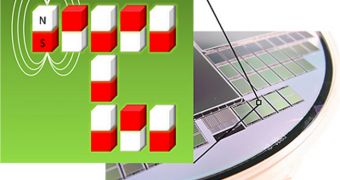According to the results of a new analysis produced by electrical engineers at the University of California in Berkeley (UCB), it would appear that replacing electrical microprocessors with their magnetic counterparts might help improve performance, while at the same time reducing consumption.
In the future, computers, cell phones, laptops and other consumer devices might be able to consume only the smallest amounts of electricity possible under the laws of physics. In order for that to happen, the teams explain, the silicon-based processors we use today need to be replaced.
The current devices are powered by electrical current, as in the flow of electrons that passes through them. But electricity is inefficient in the sense that it generates a lot of waste heat as it moves through circuits, which is why most electrical components overheat in time.
It is possible to mitigate this situation using magnets, the UCB group believes. In the new version of things, microprocessors would be made up of nanometer-sized bar magnets, which would handle logic, memory and switching operations without the need to use moving electrons.
Such a device would operate at the Landauer limit, the minimum level of energy consumption allowed for a device to operate, as expressed by the second law of thermodynamics. This processor would dissipate just 18 millielectron volts of energy per operation.
As such, future computers might become more than 1 million times more energy efficient per each operation than their current rivals. Details of the new microprocessors appear in the July 1 issue of the esteemed scientific journal Physical Review Letters.
“In principle, one could, I think, build real circuits that would operate right at the Landauer limit. Even if we could get within one order of magnitude, a factor of 10, of the Landauer limit, it would represent a huge reduction in energy consumption for electronics,” says Jeffrey Bokor.
The UCB professor of electrical engineering and computer sciences also holds an appointment as the co-director of the Center for Energy Efficient Electronics Science (E3S). The facility was founded in 2010, with a $25 million grant from the US National Science Foundation (NSF).
“It would be absolutely revolutionary,” the expert adds. He is working with UCB Department of Electrical Engineering and Computer Sciences graduate student Brian Lambson to develop the new magnetic computers.
“Today, computers run on electricity; by moving electrons around a circuit, you can process information. A magnetic computer, on the other hand, doesn’t involve any moving electrons,” Lambson explains.
“You store and process information using magnets, and if you make these magnets really small, you can basically pack them very close together so that they interact with one another. This is how we are able to do computations, have memory and conduct all the functions of a computer,” he concludes.

 14 DAY TRIAL //
14 DAY TRIAL //